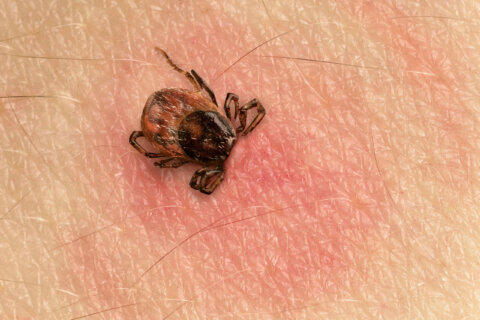Editor’s Note: This story has been changed to reflect how often a person dies of melanoma.
WASHINGTON — Every 59 minutes, another American dies from melanoma, a type of skin cancer that can spread throughout the body.
Sun protection and early detection are crucial, and that’s why the first Monday in May has been designated Melanoma Monday — a time to raise awareness of this potentially deadly disease.
“This is no question a preventable form of skin cancer in many respects,” said Dr. Adam Friedman, an associate professor of dermatology at the George Washington University School of Medicine and Health Sciences.
He said sun protection is key, but so too are regular skin checks at home and in a doctor’s office.
A mole that evolves over time is a big sign of trouble. Friedman said to think of the “A B C D E” of melanoma:
- A is for asymmetry where one side of the mole looks different from the other.
- B is for border, where the border of the mole changes from a regular to a more scalloped look.
- C is for color, either a darkening or lightening of the mole.
- D is for diameter, or change in size.
- E sums it all up and stands for evolution.
Any of these telltale signs should be checked out immediately — melanoma is most treatable when detected early, before it has started to spread.
When the mole is still localized, surgery is used to remove it and some surrounding tissue. But metastatic melanoma warrants far more aggressive treatment.
The good news is, some of the biggest breakthroughs in oncology have come in the development of new medications for melanoma.
“It is extraordinary what is going on right now, over just the past five to ten years,” said Friedman.
He points to whole new categories of treatment, including big advances in immunotherapy to convince the immune system to see the cancer is an invader.
Friedman is most impressed by an innovative treatment called oncolytic immunotherapy, which involves using a modified virus to attack cancer cells.
“This is wild,” he said, noting that a modified herpes virus has proven very successful, in combination with other drugs, in targeting and treating melanoma.
It’s a far cry from 10 to 15 years ago, when doctors had little to offer patients with metastatic melanoma. And Friedman expects even more breakthroughs in the not-too-distant future.
He said that skin cancers in general are the most common form of cancer in the United States. And while melanoma is the deadliest, it does not occur anywhere near as often as the two other forms of skin cancer: basal cell carcinoma and squamous cell carcinoma.
All forms of skin cancer benefit from early identification, and on Friday, George Washington’s Department of Dermatology will be doing free screenings at its office in Bethesda. The screenings will be offered between 1 and 4 p.m. and no appointment is necessary.







